The interior design — the furniture, the appliances, and the accessories — should be an expression of your personality. After all, you’ve got to look at it every day. Why not be comfortable there?
But sometimes you need help expressing yourself. You need an expert eye and mind to look at you and your space and help you take full advantage of its potential. You need someone who understands what furnishings and décor are available out there to look at your budget and your living space to help you make intelligent decisions about your home. Luckily there are specialists in Memphis who can do these things. They’re interior designers, of course, and they’re ready to help you make a Garden of Eden out of your home.
 Greg Cravens
Greg Cravens
When Virginia Rippee of Virginia Rippee & Associates first meets a client, she likes to get to know them, to find out what kind of things they’re interested in and what things they don’t like. That’s not in interior-design terms, though. Rippee wants to know the clients personally. She wants to see what styles and colors they’re wearing, what their personality is like. She also likes to “listen to the space they’re in” to hear what it says about the homeowner’s tastes. It all adds up to help her create a kind of profile of her client so that she can form a design that they’ll be happy with. She wants to talk to everyone who will live in the space.
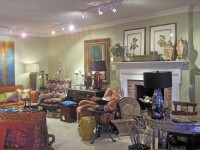
The showroom at Virginia Rippee & Associates gives the homeowner many smart design choices of furniture, art, and accessories.
It isn’t until that part of the process is complete that she gets to work on actually designing the space. When she has something for the client, she presents it to them in her sample room and shows how she would arrange the furniture and accessories, Rippee says. Then she immediately asks them, “‘Does this fit your needs? To your mind is this correct?'” She continues, “Then I will take them to the colors and the fabrics and the furniture. I do everything for a reason in the space that is being furnished. There is a reason for absolutely everything.”
For Rippee, smart design decisions are based on determining what you’re going to be happy with for a long time. “We help them foresee the future of living in the space,” Rippee says. “They don’t buy something and get it home and say, ‘Oh, well, this doesn’t fit or this doesn’t work or I hadn’t thought about that.’ We try to foresee everything.”
Rippee leads clients to her showroom where they can see the options they have for furnishings and accessories. She does her ordering through catalogs with makers that she knows well and trusts. Ordering this way also helps keep clients from just buying in to whatever the trend of the moment is. For example, Rippee says, “We can find clients fabrics that are a lot more interesting and for not a lot more money. I’d rather sell them things out of catalogs because I know these lines well enough that I believe in the way they’re sitting, the way they fit.
Most people, when we do a room for them, years down the road they still like the space,” Rippee says. “We want clients to not just say, ‘Oh, this is nice.’ We want them to look at the space and say, ‘Wow, I love it.'”
 Greg Cravens
Greg Cravens
For interior designer Ken Lecco of Cosmic Closet, the first order of business when he meets a new client is to see how they live currently. “I meet them at their space, feel out who they are, how they entertain, what they want to get out of their space, and go from there,” Lecco says.
He always listens to the customer and makes sure that they are going to ultimately be happy with their room. But he also has opinions stemming from his many years experience decorating and his in-depth knowledge of the many options and products available to his clients that they might not know about. He makes these suggestions and tries to help the client come to the right decision.
His overall design philosophy is to avoid the temporal and embrace the long-lasting. “I don’t really follow trends,” Lecco says. “Normally, two years down the road trendy stuff is over with. The customer’s not too happy that they picked a trendy color and six months later they hate it.”

Signature style: a living room designed by William R. Eubanks
Instead, Lecco often suggests proven, time-tested designs and matches them with the client’s personality. “I do try to use more classic designs. When I pick colors out, I know that those colors aren’t going to be out of style. A lot of customers want the clean lines, want the classic stuff. A lot of the younger people want hippy, trendy stuff. I’m good with that too. Whatever they want. For the older people, I do try to steer them away from the real trendy stuff. If they want something trendy, I throw it on pillows or on a rug, where you can just take that away and still have classic furniture.”
Lecco understands the space limitations that condominium living sometimes presents. Cosmic Closet is a home furnishings and accessories store where customers can buy individual pieces to work into their homes. One example he cites of an item he sells that serves a dual purpose and cleverly utilizes limited space is a coffee table that converts into a dining-room table. The Italian-made piece has a lever that, when pressed, causes the coffee table to rise up to dining-room-table size and extend out. “A lot of customers have small lofts that don’t have a dining room. But if they want to have a dinner party once in a while, they can convert their coffee table into a dining table. It’s beautiful.” Another similarly utilitarian piece of furniture are beds with storage under them that are, Lecco adds, “done tastefully.”
Budget considerations are always an issue when Lecco’s clients are designing or redesigning a room. Lecco has plenty of options at his fingertips to make the customer happy. “It doesn’t matter what the budget is, I can work around it. I have a lot of different sources [for furniture and accessories] where I can make it work.”
The key to the whole endeavor to fabulous design on a budget is to make smart decisions: “You don’t have to spend as much money, and you can go very minimal and have a really hot place.”
William R. Eubanks opened his interiors and designs firm in Memphis in 1976. Thirty years later, Eubanks has expanded business to New York City and Palm Beach, has had his designs widely published, and has clients all over the world. Through all this, he still calls Memphis home.
Eubanks’ artistic director Dabney Coors says the business can handle whatever the customer can dream up. “This is a full-service interior-design firm that supplies clients’ needs from the simplest design request for fabric to the most complicated design of a house’s layout and interior spaces,” Coors says.
Eubanks also offers one feature that many other designers don’t: the implementation of real antiques into a room design. “Bill is known for his antiques business and his interior-design business. He travels to Europe on buying trips five times a year or more. He combs Europe for 17th-, 18th-, and 19th-century antiques, but he is not restricted by period designs. After listening closely to his clients, he designs exactly what they want. Eubanks designs in every style and every period from 17th century to contemporary.”
One look at the sumptuous colors and eye-popping antiques and you’ll be smitten with Eubanks’ designs. But that doesn’t mean he’s out of reach of everybody but the wealthiest. Says Coors: “Bill Eubanks is very attuned to his clients’ needs and is happy to have a monetary framework in which to work. A budget helps everyone.”
It seems to be a no-brainer: Get a visually God-touched room and not have to break the bank in the process. ●

Take your pick: the sample room at Virginia Rippee & Associates
In the Beginning…
Before you figure up how much money you need to plan on spending for your new condo — and way before you go on a mad shopping spree filling your home with appliances, furniture, and major accessories — find out what amenities the condo development already provides for residents. You might be surprised by how much and, in many cases, the fine quality of what is already included in the price of the home.
The Horizon offers your choice of interior-design packages and a number of appliances and luxury furnishings. Condos include granite countertops in the kitchen and bathrooms, GE Profile stainless-steel range, microwave, dishwasher, and refrigerator, and ceramic tile, hardwood floors, or wall-to-wall carpet, as chosen by the buyer. As the condominium is still being developed, buyers have many options for customizing their home, choosing from options of flooring and cabinetry. You can also upgrade to packages of appliances from other makers such as Viking. The Horizon’s selections expert is ready to help you craft your dream home. Similarly, State Place at South End also features granite countertops in the kitchen and bathrooms, GE Smooth Top range, dishwasher, microwave, a combination of hardwood floors, ceramic tile, and carpet.

An eye-catching living room in downtown Memphis’ Shrine Building
For condominiums that have already been built, where appliances, fixtures, and flooring are already installed, options for buyers are sometimes limited. But at the Shrine Building, the amenities provided at purchase are still lavish: stainless-steel GE Profile appliances, hardwood maple floor and cabinetry, and — one of the hottest things going in designs right now — Decolav bathroom sinks. Many condominiums also offer high-speed wireless Internet access.
All the money you’ll be saving on provided amenities can be spent on making the rest of your dream home a reality. Okay, now go on your mad shopping spree. ● — GA
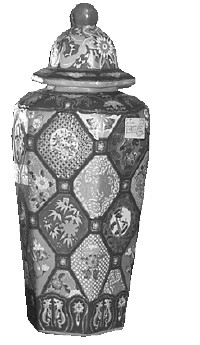

The perfect kitchen is both beautiful to look at and functional. Pictured is a kitchen designed by Eileen Henry of Kitchens Unlimited
Survival of the Fittest
One of the primary concerns for anybody living in a condominium — and especially for someone who will be living in a condo for the first time — is dealing with space restrictions. Certainly, many condos are comparable to houses in terms of square footage. But condos also don’t have attics, storage sheds, or garages in which you can keep things you’re not currently using.
The solution is twofold: use what space you do have wisely and fill it with things that you love. Any and everything else is dispensable.
Smart employment of the furniture in the space is key, says interior designer Virginia Rippee. “The first thing I do is figure out how to arrange furniture and make sure that we’re not getting anything too little or too large,” she says. “It’s how you’re going to use the room. It doesn’t matter if [the room] is huge or little, it’s arranging the furniture correctly [in it]. It’s amazing how little some things are that can be done to make the room feel better sitting in it.”
Incorrect proportioning of furniture to room size is a common problem, Rippee says. The furniture arrangement is “either too long or [makes] too much of a total square. You’re sitting too far from whomever you’re talking to.
“One of the questions I ask [the client] is, ‘How many people will be using this? How do you plan to use it?’ That way I know to arrange the furniture for as many people as fits their needs. Every piece of furniture I show them, there’s an exact place for it.”
Getting the right size furniture and fitting it in correctly to the space is just one half of the equation. Then there’s the accessories, the home-décor knickknacks you collect on junk-store adventures or buy on a whim. It’s important to pare down that which you don’t truly need or love in order to streamline the room and de-clutter your life. For Rippee, the scientific method for determining what is essential is straightforward: “If you haven’t used it, get rid of it.
“A condo has less storage, so it just has to be tight,” Rippee says. “Buy only the things that you’re really going to use; don’t buy an overabundance. Get a basic number of dishes. Then, if you’re going to have a party, that’s what paper plates and plastic cups are for, or renting glass.” Businesses such as Grand Events & Party Rentals and Party Concepts handle flatware and glassware rentals for parties and events.
Once it’s simplified, to create an overall pleasant atmosphere in a room, establish an identity for it. You will certainly want to build on the pieces of furniture and accessories that you already have and you do want to keep. Then follow the design idea through to the end, adding things over time as desired but without overwhelming the visual palette.
Live with the room as it is for a while and tweak as needed. Make sure the design elements fit in with your tastes, because your home is an important part of maximizing your quality of life. As Rippee says, “Sit down, be comfortable, and enjoy where you are.” ● — GA
Big Bang For Your Buck
When it comes to interior design, dream big. Imagine your home as if it was the embodiment of your every desire writ large. Ask yourself, if money were no object, what would I do? What kind of furniture would I have? What would the window treatments look like? What about art? Home theater and appliances? Dream big.
If you have the means to dream big and make those dreams real with the swipe of a card, go for it. Get professional advice first: An interior designer will help you maximize the potential of your living space in light of your tastes and expose you to ideas and items and craftspeople, such as furniture makers, that you might not otherwise have known existed. “If you want absolutely knockout ‘wow,’ we have it,” interior designer Virginia Rippee says.
She adds a caveat for those who can’t spend at will: “It’s not free.”
Ah, the catch. Anybody can dream big. The trick is to dream big but pay little and not compromise your vision while you do it. Is it possible? Rippee says absolutely.
One strategy is to prioritize what you want done, and then cross things off your list in stages that are within the restraints of your budget, Rippee says. Don’t eliminate or try to upgrade essential items all at once. Do it in steps so that you’re never stuck without something vital.
Another way to spend wisely begins with going through magazines and cutting out pictures of rooms that you’re drawn to. Determine what elements you particularly like and figure out how to best and most cheaply apply it to your own room. For example, you may not be able to afford an antique table that is shown in the picture, but you could buy a newer table, strip it, and paint or stain it to match your original inspiration. Creativity is free. The materials to make your dreams a reality usually don’t cost much more.
You should also consider and interview interior designers to help you, whatever your budget. A common misconception is that designers are very expensive to work with. Rippee says, “I don’t think it’s a lot more money. It may be a little more than if you went to the furniture store [buying unassisted]. But it’s things you’re going to love. You’re going to like them so much longer.” Buying through a designer will help you remain consistent with your room’s identity. He or she will also be able to give you options for furnishings and accessories so that you can divvy up your budget smartly rather than haphazardly.
Designers can also aid you in saving money in little ways, such as maximizing the utility of furniture, picking pieces that aren’t just attractive but are functional in more than one way, such as a bench or table that also has storage space in it. With a condo home, every square foot is valuable real estate space-wise.
The bottom line is to get the most out of every dollar you put into your home. Spend smart. Rippee says, “I tell people, ‘We were born beautiful instead of rich, and that’s the reason we have to get up and go to work every day.'” Fulfilling your design dreams costs money. But it doesn’t have to be prohibitive. The happiness derived from a job well done and on budget is priceless. ● — GA
Natural Selection
One of the most prudent ways to get the interior designs, furnishings, and accessories that you want is to choose businesses that can offer you plenty of options in terms of form, function, and price. Lucky for Memphians, there’s all kinds of great creative, helpful people to guide you step by step, helping you select the best that your money can buy in the evolution of your place into your dream home.
One of the trickiest rooms in the home to get right is the kitchen. They say everybody winds up in the kitchen during a party, so it’s crucial to get the room right. There are many decisions to be made there, from cabinetry to appliances to drawer pulls to color to lighting. The name of the business Kitchens Unlimited says it all. Or, almost says it all: They also do bathrooms. They can handle any kitchen need, from design to installation (and even tearing out your old cabinetry). They have a large showroom and catalogs for major appliance companies such as Bosch, Viking, Sub-Zero, Dacor, Gaggenau, and Asko and furniture-grade cabinetry that has features such as turned posts at corners and carved embellishments — one of the hottest things going right now, according to kitchen designer associate Eileen Henry.

Some of the most important elements when creating an atmosphere in your home are your lighting fixtures. According to Trey Crump of Crump Lighting, some of the new lighting designs that are getting the most attention right now are recessed halogen lighting and monorail lighting systems. The monorail systems are made of flexible, bendable metal that can be twisted like a contortionist if need be to direct the light exactly where in the room you want it. Crump does in-home consultations and also acts as an interior designer, able to assist you in every way imaginable. When designing a home for a client, Crump says, “I try to stay with their style. I complement their existing décor.” He cites multi-purpose furniture as something that homeowners with space restrictions should consider to simplify their homes. TVs can go in cabinets, coffee tables can also be chests with the potential for storing items, and furniture can even have hidden spaces for storage.
Speaking of that furniture: Memphis has some great places to get it too. Scan Interiors has been around since 1988, and they’ve seen trends come and go and have seen what designs stay strong. Their furniture features cutting-edge technologies from around the world with designs for any taste. Kim Tilton of Scan Interiors has also decorated the model home at the condos at 310 S. Main.
Another fine furniture store is Samuels Furniture and Interiors. They have designer home furnishings and bedding and a wide selection of décor. They also have a full staff of interior designers who can help you live happy in your home.
While certainly not an exhaustive list of the people who can help, these creative and intelligent folks are as smart a place to start as any. They can work with any budget and can offer you choices that you didn’t know existed. In the end, your home can be a natural extension of your personality. ● — GA
The Missing Link
In the movie The Big Lebowski, Jeff Bridges’ character — the Dude — laments the loss of his rug, saying: “That rug really tied the room together.” Why does the Dude so keenly feel its loss? Because it’s true: A room can feel empty, naked, not like home — if it’s missing a key design element such as a rug.
Matt Kiser of Kiser’s Floor Fashions would know. Getting the right rug is crucial, Kiser says. “Looking at it, living with it every day, it’s very important. It will tie in the fabrics, the wall color, the wallpaper.” Making those design building blocks cohere down to the last detail will convey a confident, well-thought-out philosophy. The consistent lines or colors will also help keep the room grounded and not distract the eye with busy design tangents.
Kiser’s Floor Fashions doesn’t just do rugs. Really, if you can think of it and it has to do with a floor, they can help: wall-to-wall carpet, hardwood flooring, ceramic tile, vinyl, laminate, on and on and on. Certain types of flooring are better than others in given situations and rooms and Kiser’s keeps abreast of the latest fashions and advanced products, so you can be certain that they will help guide you through the tricky endeavor for the perfect floor design to tie your room together.
The search for the missing link doesn’t stop on the floor, though. Window treatments are equally essential. Had the Dude lost his drapes instead of his rug, he’d have had the same sour reaction.
For many people, the idea of getting window treatments right can be intimidating. That shouldn’t be the case. Not when there are people like Susan Newby of the Drapery Studio in the world. And getting the windows right is very important, she says. “After your floors and walls, your windows are the third biggest architectural factor in the room.” Never fear. Not only can Newby get you on the right path to make your room look great, she can maximize the utility of the window treatments.
Function is as important as style. Especially when you’re living in a condo downtown. “Often what you love most about downtown riverfront living also plagues you: light, heat, the view. Sometimes you want it, sometimes you want to be protected from it,” Newby says. Depending on how close you are to other buildings and other potentially inquiring eyes, window treatments help ensure your privacy.
And the view of the sun rising in the morning or setting over the river in the late afternoon can sometimes be as much a nuisance as it is a beautiful vista. The light reflecting off the river has a sneaky way of getting into your room and into your eyes, Newby says. The sun presents other problems too, such as its ability to fade prized possessions in your interior: hardwood, furniture, and artwork. Window treatments can go a long way toward protecting your possessions, your home, even your frame of mind.
The functionality of drapes in a condo extends when you take into account its use as a noise dampener. It insulates your interior from the sound of the streets, and it even cuts down on the reverberation inside your home between hardwood floors and lofty ceilings.
The form of the window treatments overshadows most of these considerations, though, at least on the surface. Even if you’ve got your furniture, appliances, and accessories right, a room just won’t work until the window treatments are in harmony. That’s not to say you want your windows to be the main feature in your room. Newby says the correct window treatment “is like a good haircut. You don’t want it to be obvious. It’s not the focal point.”
Depending on the room, she often tries to keep the window treatments basic. This gives “a lightness to the room, an openness.” That’s not always the case, though. “Some rooms cry out for something more,” Newby says.
Both Matt Kiser and Susan Newby do in-home consultations, and they’re both adept at working within a customer’s budget needs and still producing gorgeous results. The Dude abides, and with the help of Kiser and Newby, so can you. ● — GA
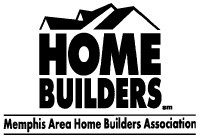
 Artist Rendering Courtesy of Paradigm Productions
Artist Rendering Courtesy of Paradigm Productions 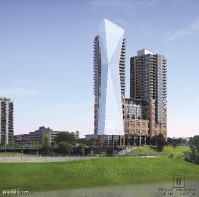 Artist Rendering Courtesy of Paradigm Productions
Artist Rendering Courtesy of Paradigm Productions 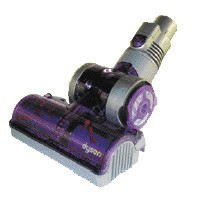

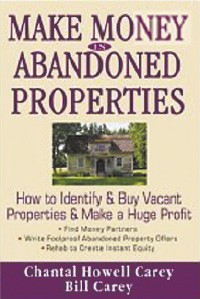
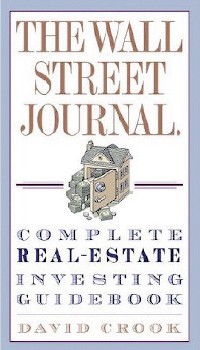
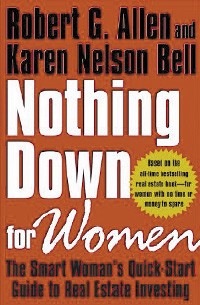
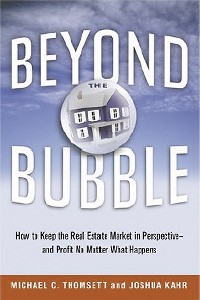
 Justin Fox Burks
Justin Fox Burks 

 Greg Cravens
Greg Cravens 
 Greg Cravens
Greg Cravens 




